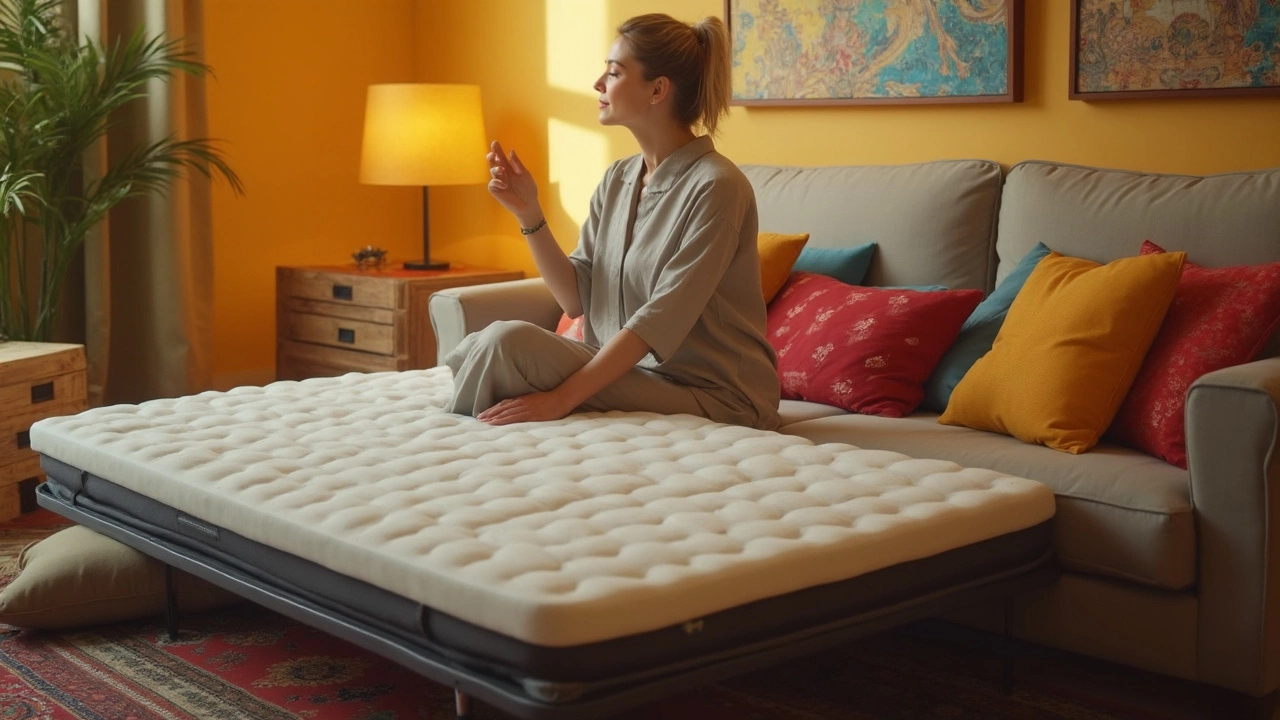Sleeping Solutions: Sofa Beds, Daybeds & Space‑Saving Comfort
Need a place to crash without stealing bedroom space? You’re not alone. Lots of folks turn to sofa beds, daybeds, and other multi‑purpose pieces to get a comfy night’s sleep while keeping the living room tidy. Below you’ll get straight‑forward advice on picking the right piece, setting it up, and keeping it in good shape.
Choosing the Right Sofa Bed for Your Space
First, measure the spot where you’ll put the sofa bed. Grab a tape measure and note the width, depth, and ceiling height. Most sofa beds are 80‑90 cm deep when closed, but the opened length can stretch 180‑200 cm. Make sure there’s enough clearance for the armrests to swing out.
Next, think about the mattress type. Memory‑foam tops feel plush and stay flat, while innerspring mats give a bouncier feel. If you share the bed often, go for a thickness of at least 12 cm – anything thinner will feel cheap after a few nights.
Don’t forget the frame. A hardwood or metal frame adds durability and stops the bed from sagging. Look for reinforced joints and a sturdy mechanism; noisy springs are a red flag. Our post “Are Sofa Beds Comfortable?” breaks down the pros and cons of each style, so give it a read if you’re stuck.
Finally, style matters. Choose a fabric that matches your living room vibe but also holds up to nightly use. Leather feels sleek but can get sticky in summer, while microfiber hides pet hair well. A neutral color like gray or beige works with most decor, and you can always add a throw for a pop of personality.
Daybeds and Multi‑Purpose Furniture: When and Why
Daybeds sit somewhere between a couch and a full‑size bed. They’re perfect for studio apartments or guest rooms where you need a seating area by day and a sleeping spot by night. Look for a daybed with a sturdy slatted base – it supports the mattress better than a simple platform.
If you have kids, pick a low‑profile model with rounded edges. That way, the little ones won’t bang into sharp corners when they tumble onto the bed. A daybed with built‑in storage drawers is a win‑win: you stash bedding, blankets, or games without adding extra furniture.
Pair the daybed with a sturdy side table that doubles as a nightstand. A narrow table fits tight spaces and gives you a place for a lamp, alarm clock, or a book while you’re lounging. Check out the article “Daybed Couch Guide” for layout ideas that keep traffic flow smooth.
When you’re not using the daybed for sleep, treat it like a regular couch. Rotate the cushions every few weeks to keep the foam even, and vacuum the fabric to prevent dust buildup. A quick spot‑clean with mild detergent will keep stains at bay without damaging the upholstery.
Whether you go with a sofa bed or a daybed, the key is to match the piece to your lifestyle. If you host friends often, a sofa bed with a quick‑fold mechanism saves time. If you need a dedicated sleeping zone but lack a spare room, a daybed with storage gives you both rest and organization.
Bottom line: measure, choose the right mattress, check the frame, and pick a fabric that fits your routine. Follow these steps, and you’ll have a sleep-friendly solution that looks good and lasts years. Ready to upgrade your living space? Start by browsing our collection and see which sleeping solution clicks with your home.
Can I Put a Memory Foam Mattress on a Sofa Bed?
Thinking about swapping your sofa bed’s uncomfortable mattress for a cozy memory foam one? You’re not alone—many people want to boost comfort for guests or themselves. This article breaks down whether memory foam mattresses actually work on sofa beds, what problems to watch out for, and what options you have if you want a better sleep experience on your pull-out. I’ll share real tips and clever workarounds, all based on how sofa beds are built and how memory foam behaves. Let’s get your sofa bed as comfy as your regular bed—without any regret purchases.





